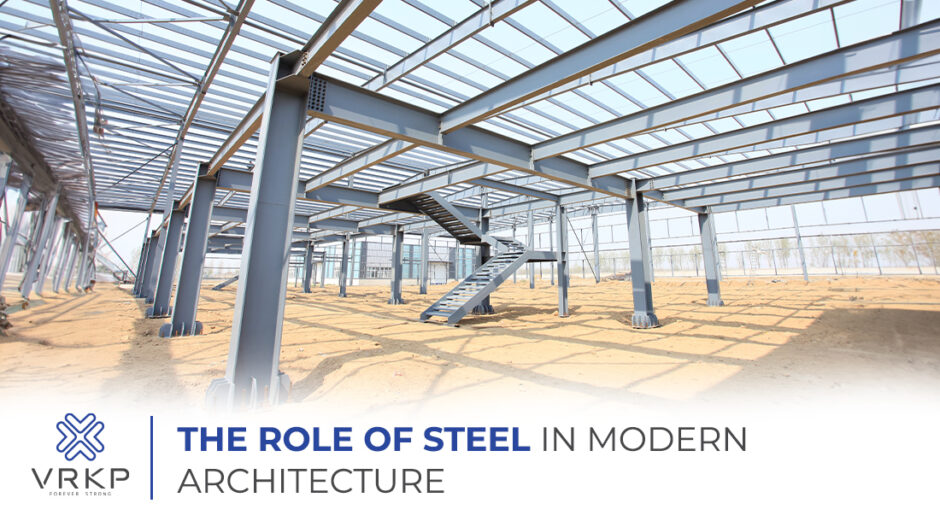THE ROLE OF STEEL IN MODERN ARCHITECTURE
In the realm of modern architecture, the role of steel in modern architecture has emerged as a fundamental material that revolutionizes the way we design and construct buildings. Its inherent strength, flexibility, and sustainability make it an indispensable component in contemporary construction. With a focus on sustainability and lasting structures, steel plays a pivotal role in shaping the future of architecture. Let’s read on to discover how.
Role Of Steel In Modern Architecture For Sustainable And Green Construction
Strength and Durability: Steel offers exceptional strength and durability, ensuring the longevity of structures and reducing the need for frequent maintenance or replacements.
Resource Efficiency: Steel is highly recyclable, with a significant portion of it being produced from recycled materials. Its recyclability minimizes waste and reduces the strain on natural resources.
Energy Efficiency: Buildings constructed with steel can incorporate efficient insulation systems and energy-saving technologies, leading to reduced energy consumption and lower environmental impact.
Carbon Footprint: Steel production has become increasingly eco-friendly, with advancements in manufacturing techniques and the use of renewable energy sources, resulting in a reduced carbon footprint.
Design Versatility: Steel’s flexibility allows for innovative and sustainable architectural designs, enabling open spaces, expansive windows for natural light, and efficient space utilization.
Countries like Denmark Germany Singapore and Sweden are at the forefront of sustainable construction, promoting the use of steel to achieve energy-efficient buildings and a low-carbon future.
Modern Construction: Lasting Structures and Sustainability
Design for Longevity: Modern architecture emphasizes the creation of structures that withstand the test of time, and steel’s durability ensures the longevity of these buildings, reducing the need for frequent renovations or replacements.
Sustainable Building Materials: Incorporating steel as a primary construction material aligns with the principles of sustainable development, contributing to energy efficiency, reduced waste, and lower environmental impact.
Life Cycle Assessment: Steel’s sustainability is evaluated through life cycle assessments, which consider its environmental impacts from extraction to disposal, ensuring a holistic approach to sustainable construction.
Latest Technologies Enhancing Steel’s Reliability in Modern Architecture
High-Strength Steel
Advanced steel alloys, such as high-strength steel, offer superior strength while reducing the overall weight of structures, leading to more efficient and sustainable designs.
Prefabrication and Modular Construction
Prefabricated steel components and modular construction techniques enhance efficiency, reduce waste, and allow for faster construction timelines, aligning with sustainable building practices.
Structural Health Monitoring
Incorporating sensors and monitoring systems in steel structures enables real-time assessment of their health, ensuring proactive maintenance and enhancing their long-term sustainability.

